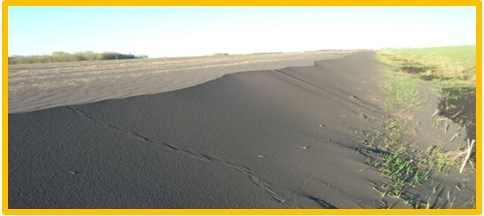563 - Open Winter/Reduced Residue
Increased Stand Establishment Risks

Fall and winter weather to date point to greater challenges preparing an ideal seedbed and increased risk of soil erosion and stand loss from high winds this spring. Growers took advantage of the long, warm, dry fall to complete extensive tillage. In numerous fields across the RRV excessive tillage buried nearly all crop residue maximizing wind erosion risk. If soil blows after planting stand loss will occur and replanting risks will be real.
Stand Protection Options This Spring
- Minimize tillage that leaves the soil prone to blowing
- Maintain soil structure to reduce soil crusting or erosion
- Maintain 20-30 percent previous crop residue on the soil surface - reduces erosion, crusting, and stand loss from wind
- Keep interow zone cloddy - residue managers can move clods between rows
- Use "stinger" tines on planters to bring clods to the surface between rows
- PLANT COVER CROP!

Cover Crop Management Recommendations
- Seeding rate should be ½ - 1 bushel per acre
- Cover crop can be wheat, barley or oats - based on cost of available seed
- Control ¾ - 1 bushel seeding rates at the 3-leaf stage, lower seeding rates by the 4-leaf stage
- Excessive cover crop growth reduces yield by competition for nutrients, water, and light
- Dying cover crop will provide stand protection for 2-4 weeks after control
- Banding first herbicide applications will significantly extend stand protection
- RSA loss at 5-leaf stage is 921 lbs. greater than control at 3-leaf stage (Dexter, 1994)
- Wheat will take up 30-50 lb. of nitrogen per acre within 28 days after emergence
- Cover crop N uptake and competition may delay canopy closure reducing yield
- Cover crop N uptake may reduce crop quality if cover crop control is delayed
Contact your Agriculturist when you have questions about cover cropping or other issues.
